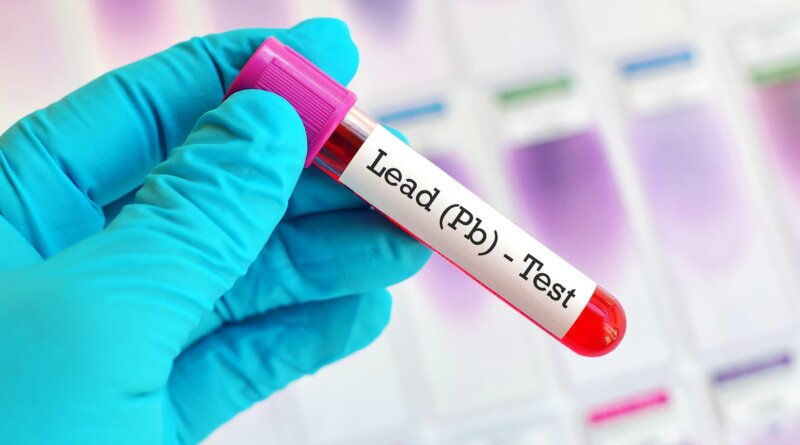Lead Exposure Is Still a Problem for Kids, and the Pandemic Has Made It Worse
The good news – if it’s possible to describe a slow, insidious, and permanent poisoning as “good news” – is that the blood lead levels of children in the United States have dropped steadily over the past half-century.
The bad news is, the pandemic may have erased some of those gains.
During the pandemic, and especially during the initial period of strict COVID-19 lockdowns, fewer children have gone to the doctor for well-child visits, which means fewer children underwent routine tests to monitor their blood lead levels (BLLs), according to a 2021 CDC report. At the same time, with schools and day care centers closed, those children were spending more hours at home, in daily contact with lead-containing paint, water, dust, and soil.
“Lead exposure affects the developing brain in early childhood, and its effects are essentially permanent,” says Andrew Loza, MD, PhD, a resident physician at Yale University School of Medicine who examined children’s rates of lead testing during the pandemic at one Connecticut clinic.
Even low levels of lead exposure can lower IQ and cognitive performance, cause learning difficulties, shrink kids’ attention spans, and prompt behavior issues. For adults, lead exposure is associated with higher risk of cardiovascular death and kidney damage.
High lead levels also raise the risk of violent and even criminal behavior later in life. Studies published in Environmental Research and elsewhere have mapped spikes of population-level childhood lead exposure followed – typically 20 years later – by near-identical surges in crime.
“Lead exposure is linked with conduct disorder and delinquency,” says Michael McFarland, PhD, co-author of a 2022 PNAS study that showed half the U.S. population was exposed to lead in early childhood. “My take is that lead exposure has contributed to those crime waves, certainly.”
How widespread is the problem? A 2021 study in JAMA Pediatrics, based on testing more than a million U.S. children under age 6, showed more than half had detectable levels of lead in their blood and nearly 2% had elevated levels. That may not sound steep until you do the math: it amounts to nearly 475,000 children nationwide. And growing evidence, says Loza, indicates that “there is no blood level of lead that is safe to have.”
The U.S. government banned lead-based paint for residential use in 1978 and prohibited lead-based gasoline in most vehicles in 1996. But decades of lead exposure – in dust drifting from painted window frames, in backyard soil where exhaust fumes settled, in water sluicing through lead-soldered pipes – has left its toxic legacy.
McFarland’s PNAS research showed that over 170,000,000 people – chiefly, those born between 1951 and 1980 – were exposed to high lead levels in early childhood. Those are yesterday’s children. But kids growing up today still suffer lead exposure and its irreversible impact.
“It’s most harmful in the biologically sensitive period, infancy to around age 5,” says McFarland. Once in the body, lead mimics calcium, a dangerous chemical trick that changes the way brain signals pass from one neuron to another. That prompts a cascade of effects, he says, including emotional disruption, attention deficit hyperactivity disorder, and general psychological distress.
Lead exposure hurts kids of color disproportionately. Black children are 2.8 times more likely than white children to have BLLs over 5 micrograms – a level of exposure that stems from decades of housing discrimination and generational poverty – according to a 2020 article in the International Journal of Environmental Research and Public Health.
Children of color are more likely to live in properties with deteriorating lead-based paint and in dense, urban areas where plumes of leaded car exhaust settled in soil and groundwater. “These same populations are also the ones affected disproportionately by COVID – economically and health-wise,” Loza says.
Testing of children’s BLLs is far from uniform: Those on Medicaid must be tested at ages 1 and 2, but for kids with private insurance, requirements differ from state to state.
During the peak period of COVID-19 restrictions, routine BLL testing of children in 34 states and localities dropped by 34% compared to the same period in 2019, according to the CDC’s February 2021 Morbidity and Mortality Weekly Report.
That means nearly 10,000 children with BLLs over 5 micrograms could have escaped notice. Loza, co-author of the 2021 study on pandemic lead-testing rates in The Journal of Pediatric Health Care, recalls seeing a family with two children: a 4-year-old whose BLL, tested before the pandemic, was elevated but who had not been given a follow-up test, and a younger sibling who had never been tested.
“The parents said it was scary to bring their kids to a doctor’s office; they were trying to mitigate exposure [to COVID-19]. I realized we were putting some of this burden of preventive medicine on the families, weighing COVID exposure against lead toxicity,” Loza says.
Lead exposure is irreversible, but doctors and advocates say it’s still critical to know when children’s BLLs are high so that families can remove sources of lead and teachers, parents, and doctors can look for, and respond to, any cognitive and behavioral changes.
“This is not rocket science,” says Colleen McCauley, MPH, co-chair of Pennsylvania’s Lead-Free Promise Project, which aims to get lead paint hazards out of homes, boost lead testing, and refer affected children for early intervention services. “This is a health condition that is entirely preventable.”
What will be the lifelong impact of lead exposure on the COVID generation – children who also weathered the social, emotional, and learning losses of the pandemic?
“Kids who have lead in their bodies have trouble learning. They have trouble paying attention,” says McCauley. “Children who test positive for lead are at higher risk of not graduating from high school. They are at higher risk of getting involved in criminal activity.”
As for the future of those children, McFarland says there are more questions than clarity. “We know that [lead exposure] has implications for intelligence – lower levels, which equate to considerable loss of earnings. We know it relates to emotional dysregulation, conditions like ADHD.
“But what are the unknowns? Are there going to be effects in terms of cognitive decline? How will this affect people as they get into old age? [Lead exposure] is something we suspect will continue to influence the health of the population for the next few decades.”
He notes that while lead may be absent from car gasoline and new paint, it’s still used in fuel for prop airplanes. Lead also lurks in soil, drinking water, some traditional medicines, and consumer products like toys and collectibles – some of the very things that more children have been exposed to at home during the pandemic.
Lead has a long and tainted history. Regarded by the ancients as the “father of all metals,” lead was an ingredient in rouges and mascaras, paint pigment, spermicide, condiments, and in the miles of plumbing that quenched the thirst of Rome and its empire cities. Romans knew that acute lead poisoning could cause madness, even death, but they didn’t realize the creeping effects of low-level exposure.
Every particle of lead still in the environment is a risk to children. But, says McFarland, we can still learn from the ancients’ mistakes – and from our own casual use of lead in prior decades. “From the early 1920s, there were concerns about the toxicity of lead,” he says, but there was also an assumption that the substance was “innocent until proven guilty.”
Now, he says, “Perhaps we should not assume that [substances] are benign until proven otherwise, but have some standard to determine whether they are harmful before we release them to the masses.”




